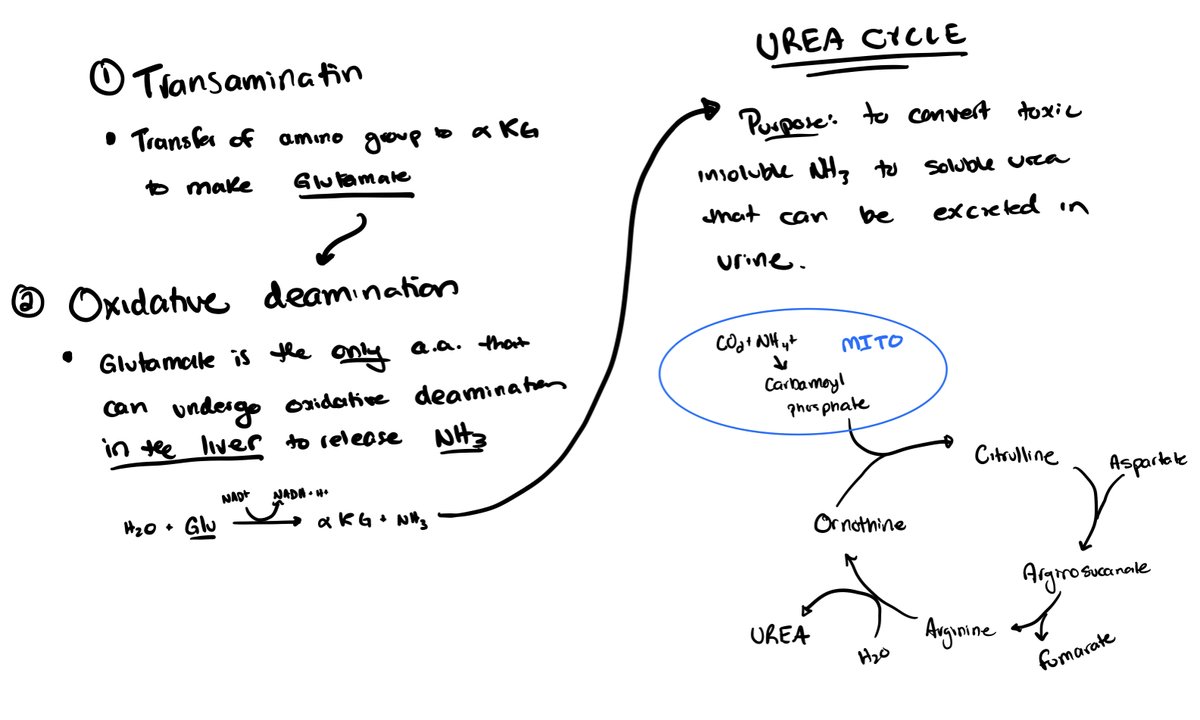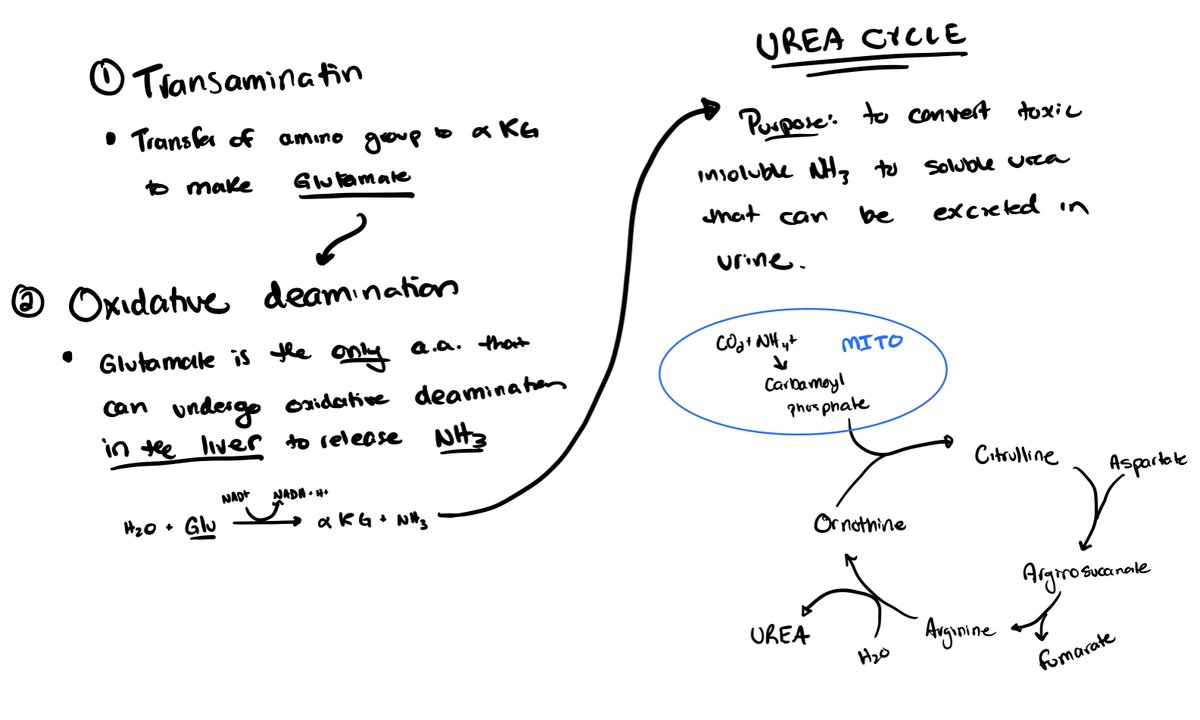
1/ Another in my biology series of How it Works. This time... How Does You Body Get Rid of Excess Nitrogen? #Protein
The short answer is that it transforms the nitogenous group (amino group) into urea, and it gets peed out. But let's dig in a bit...

The short answer is that it transforms the nitogenous group (amino group) into urea, and it gets peed out. But let's dig in a bit...


2/ The first step is to get the Nitrogen-containing amino group off of the donor amino acid. This is done by a "transamination reaction" in which transaminase enzymes effectively shuffle the amino group, transfering it from one donor amino acid to an acceptor alpha keto acid... 

3/ Again, just a simple shuffling. In the example shown Alanine is the donor amino acid, and it's amino group is transfered to alpha-ketoglutarate to make their respective alpha keto acid and amino acid pairs: Pyruvate & Glutamate... 

4/ Two quick things to note. First, alanine is basically "pyruvate in disguise!" That's not important to this thread but bank that information as it's actually relevant to the hypoglycaemic effect of ketone bodies! Stay tuned for a new paper by .@Ad_SotoMota, which we will cover
5/ Second, alpha ketoglutarate is usually the alpha keto acid acceptor, generating glutamate. This is importnat because only glutamate can undergo "oxidative decarboxylation" a reaction that liberates the nitrogen group making ammonia! Then...
6/ Then we have the urea cycle. The ammonia is pulled of the glutamate, regenerative alpha-KG, and then combined with carbon dioxide in the mitochondria. The product leaves the mito, goes through a series of intermediates, and urea and produced...
Then you pee it out!
Then you pee it out!

• • •
Missing some Tweet in this thread? You can try to
force a refresh









